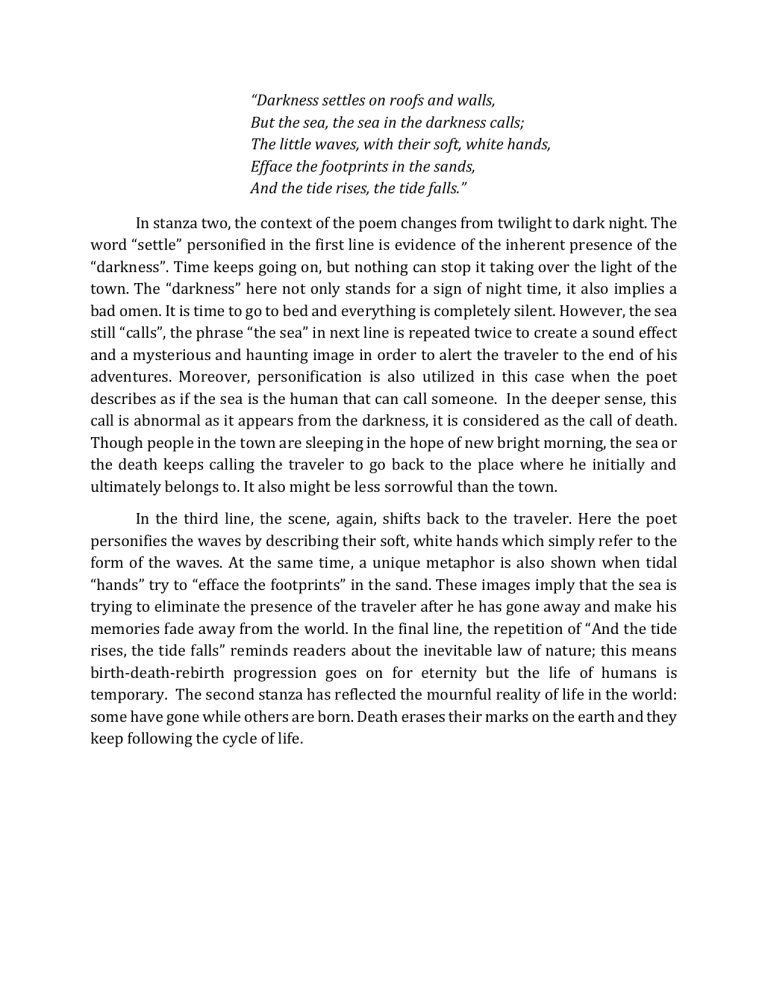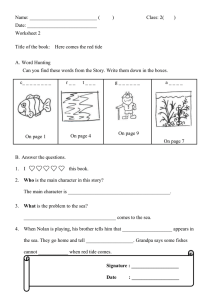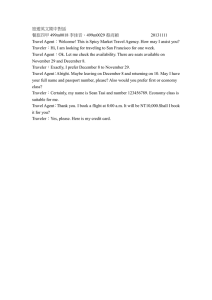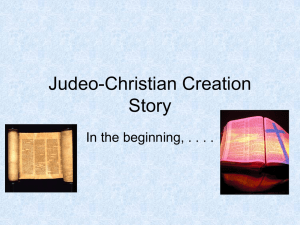
“Darkness settles on roofs and walls, But the sea, the sea in the darkness calls; The little waves, with their soft, white hands, Efface the footprints in the sands, And the tide rises, the tide falls.” In stanza two, the context of the poem changes from twilight to dark night. The word “settle” personified in the first line is evidence of the inherent presence of the “darkness”. Time keeps going on, but nothing can stop it taking over the light of the town. The “darkness” here not only stands for a sign of night time, it also implies a bad omen. It is time to go to bed and everything is completely silent. However, the sea still “calls”, the phrase “the sea” in next line is repeated twice to create a sound effect and a mysterious and haunting image in order to alert the traveler to the end of his adventures. Moreover, personification is also utilized in this case when the poet describes as if the sea is the human that can call someone. In the deeper sense, this call is abnormal as it appears from the darkness, it is considered as the call of death. Though people in the town are sleeping in the hope of new bright morning, the sea or the death keeps calling the traveler to go back to the place where he initially and ultimately belongs to. It also might be less sorrowful than the town. In the third line, the scene, again, shifts back to the traveler. Here the poet personifies the waves by describing their soft, white hands which simply refer to the form of the waves. At the same time, a unique metaphor is also shown when tidal “hands” try to “efface the footprints” in the sand. These images imply that the sea is trying to eliminate the presence of the traveler after he has gone away and make his memories fade away from the world. In the final line, the repetition of “And the tide rises, the tide falls” reminds readers about the inevitable law of nature; this means birth-death-rebirth progression goes on for eternity but the life of humans is temporary. The second stanza has reflected the mournful reality of life in the world: some have gone while others are born. Death erases their marks on the earth and they keep following the cycle of life.


